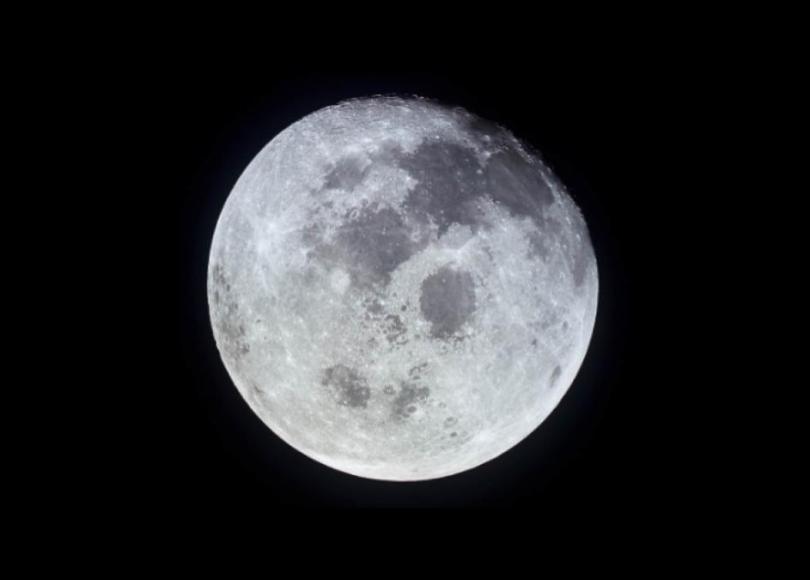“And of his signs are the night and day,
the sun and the moon…” (41:37)
And He is the One Who created the day and the night, the sun and the moon—each travelling in an orbit (Qur’an 21:33)
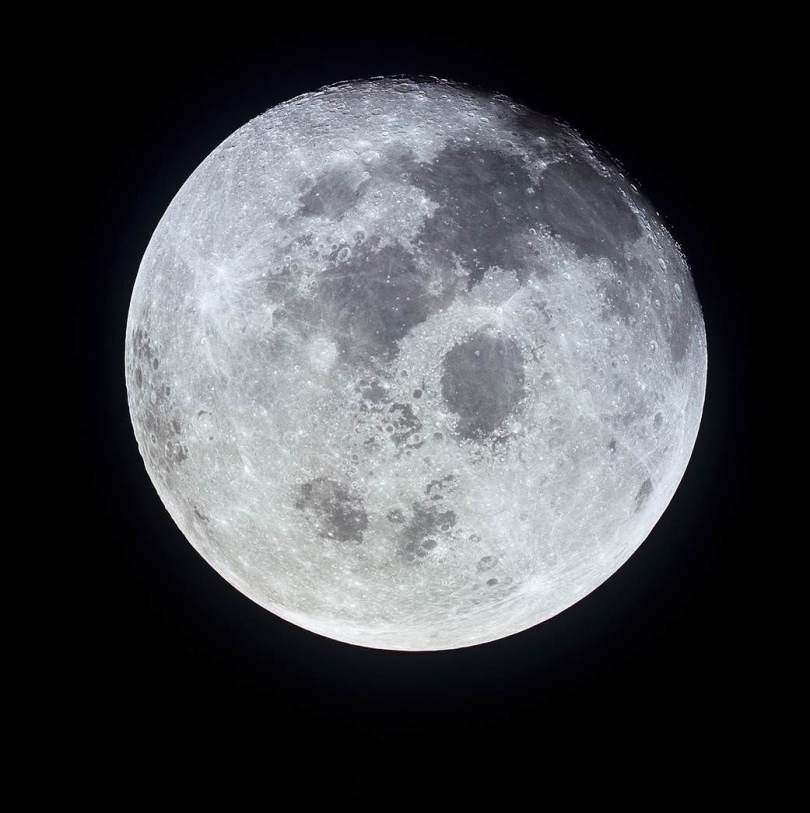
In all civilisations, the Moon has captivated all cultures inspiring beliefs, art forms, and scientific pursuits. From the Greek root me meaning to measure, the word ‘moon’ can be traced to the Old English word mona which shares its origin with the Latin word mensis, meaning month; hence, it was named Moon. The Earth’s Moon, a natural satellite that moderates the planet’s wobble on its axis, was scientifically named “Moon” because people did not know that other moons existed until Galileo discovered the four moons orbiting Jupiter in 1610 (NASA).
The movements of Earth’s Moon were used to keep track of the passing year and set schedules for hunting, planting, and harvesting. Indigenous cultures tracked the passage of time through full moon cycles and are credited with coining the term “many moons ago” to indicate a long time between events (Farmer’s Almanac).
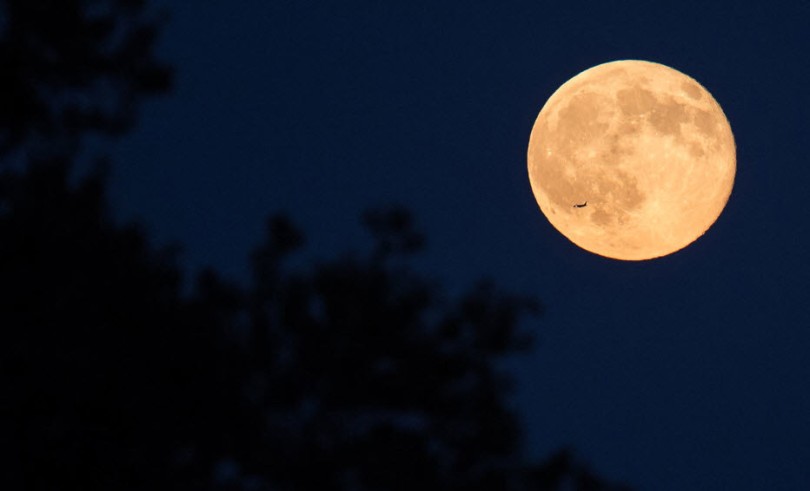
The Moon has played a prominent role as a timekeeper, an emblem of the divine, and an inspiration for poets. For thousands of years, people have gazed up at the mystical celestial body and tried to make sense of its rhythm and aura, giving rise to numerous myths about its effect on humans – from werewolves to lunacy and seizures. Ancient sky-watchers speculated about its source of light, what it was made of, and whether it was inhabited.
In pre-historic times, the sacredness of the Moon was viewed in terms of the rhythmic life of the cosmos and its dominion over the ocean tides. The cyclical process of disappearance and appearance of the Moon is the basis of its widespread association with the land of the dead, the place to which souls ascend after death, and the power of re-birth.
In contrast to the harsh Sun, the cool reflective Moon is a comforting, enchanting presence “with a pull so strong it creates bulges in the ocean’s waters” (Hall, Moon’s Lore). The Sun is the realm of the waking hours while the Moon inhabits the landscape of the soul and dream life. In ancient Egypt the Moon-god Thoth took over when the Sun-god journeyed into the underworld at night.
In some cultures the Moon is female, in other cultures it is male. For the Greeks the Moon was the goddess Selene (or Artemis, or Phoebe); for the Romans, Luna (hence ‘lunar’) or Diana; and Chang’e for the Chinese. The ancient Egyptian queen and mother of the famous pharaoh-queen Hatshepsut was named Ahmose, meaning ‘born of the moon.’ In ancient Iraq, the Moon god was called Nanna, protector of humanity, keeper of time, and guardian of the future. For the Inuit peoples of the Arctic, and others, the Moon was a male deity, while in some Indigenous cultures the Moon is ‘grandmother.’
As a divine being, Moon halos are depicted in paintings around political or religious leaders to suggest their divinely ordained power.
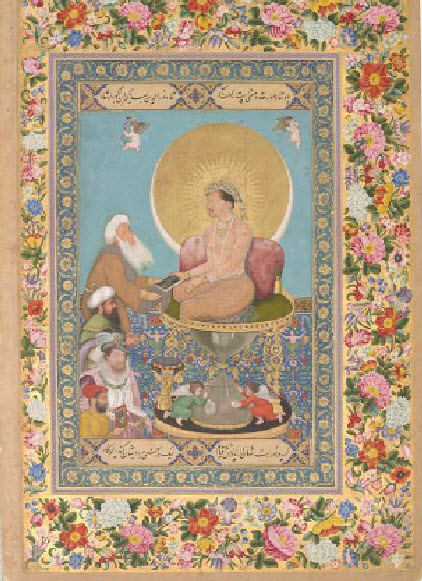
The Mughal Emperor Jahangir’s halo combines a Sun disk and crescent Moon, alluding to his divinely sanctioned aura. Mughal emperors considered the harmonious interaction between the Sun and Moon essential for their fortunes.
Observations of the Moon and its cycles have been essential to Islamic life and practice as the Islamic year is based on the lunar calendar, each month beginning with a new crescent Moon. The Qur’an “speaks of the Moon’s creation as part of God’s universe and eternal order, and names it as one of God’s many signs to be observed. In the field of astronomy, along with mathematics, medicine, and other fields, Muslim scholars were distinguished contributors to global knowledge, playing a significant role in the European renaissance.
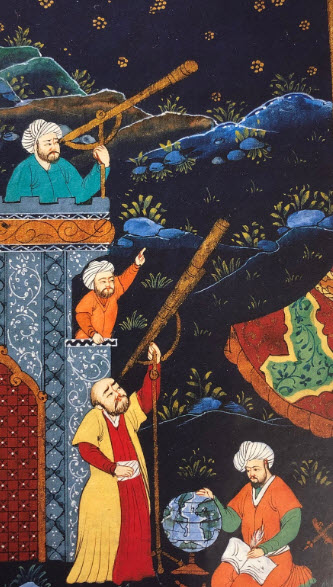
(See Islamic civilisations have played a critical role in advancing astronomy)
Reflecting the light of the Sun rather than emanating light itself, the Moon’s eternal path and stations move in harmony with those of the Sun and the heaves.” In Islamic astrology, the Moon is often personified and considered feminine in nature, regularly shown with a woman’s face (Aga Khan Museum).
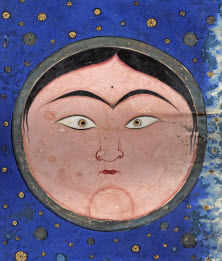
In Persian culture, the Moon is also used in the spiritual, poetic, and visual symbolism focused on Imam Ali. The luminous quality of Imam Ali’s face is often likened to the Moon, while Imams are described as silhouette of light. Like the Moon reflects the light of the Sun, Imam Ali’s face is seen as reflecting the rays of divine light (Aga Khan Museum).
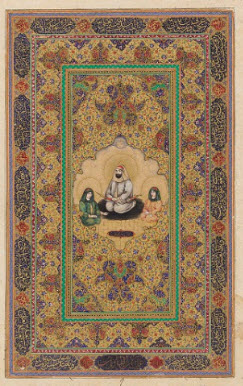
In the esoteric Ismaili tradition, the Moon was compared to the position of the hujja, the representative da’i of the Imam, “illuminating the world by virtue of the light it received from the Sun i.e. the Imam” (Nanji, The Nizari Isma’ili Tradition in the Indo-Pakistan Subcontinent p 109). Just as the Moon’s light is in essence the light of the Sun, similarly, the guidance of the Imam of the time is that of God and the Prophet (Allamah Nasir al-Din Hunzai, Recognition of Imam). Just as the physical world cannot exist without the Sun, the spiritual world needs the spiritual Sun for its progress towards recognition of the Divine.
Whether a heavenly body, a resting place for the dead, or a divine being itself, the Moon’s earliest meaning for humans was a sacred one, mainly because it was mysterious, unattainable, and at an insurmountable distance.
With the invention of scientific instruments and their successive improvements, the Moon was stripped of its mythic distance as it could be studied and mapped; it was no longer a revered deity. However, the Lady of the Night remains a source of fascination, continuing to be glorified in poetry and literature as she tugs our romantic nature and inspires the soul.
“Tell me the story about how the Sun loved the Moon so much
he died every night to let her breathe.”
Unknown
Sources:
Azim Nanji, The Nizari Isma’ili Tradition in the Indo-Pakistan Subcontinent, Caravan Books, New York, 1978
Molly Hall, The Moon’s Lore and Meaning in Astrology
Moon Worship, Encyclopedia Britannica
The Moon: A Voyage Through Time, Aga Khan Museum
Nadia Drake, Why Do People See Faces in the Moon? National Geographic
Omur Harmansah, Visualizing the Moon in the Ancient Near East, ResearchGate
